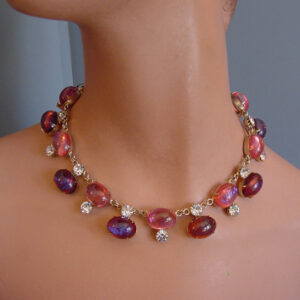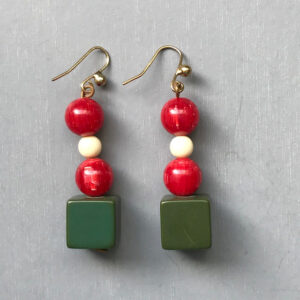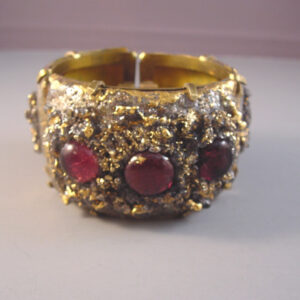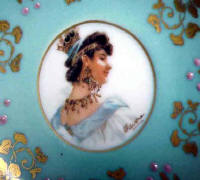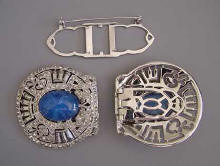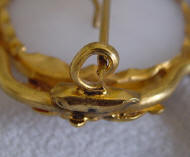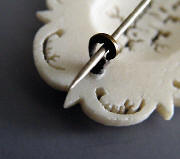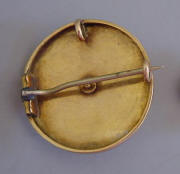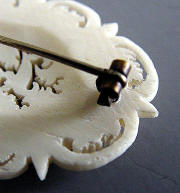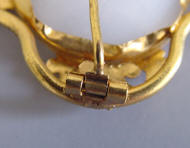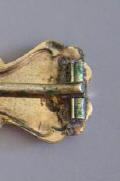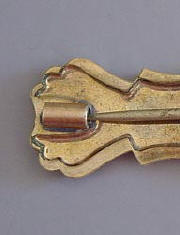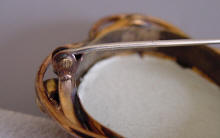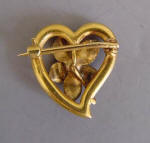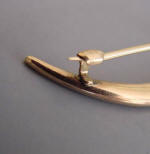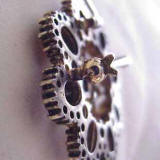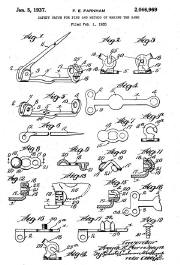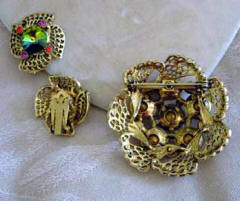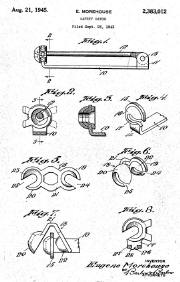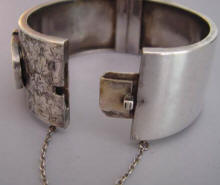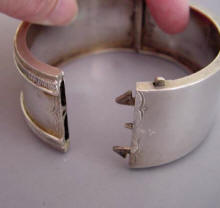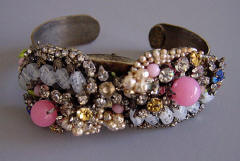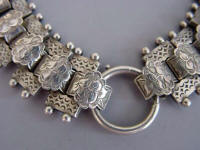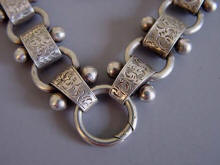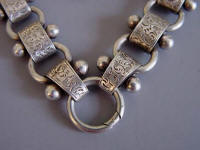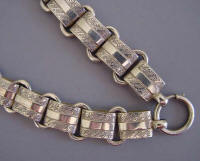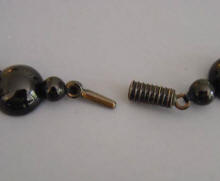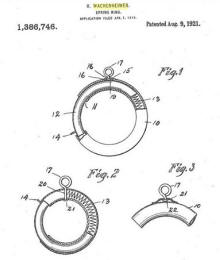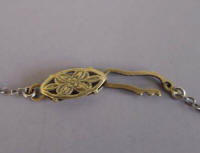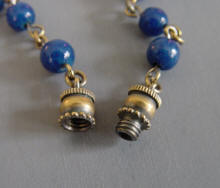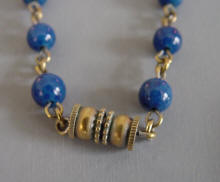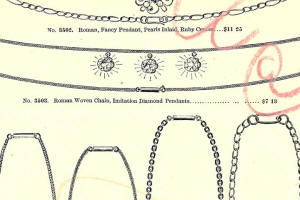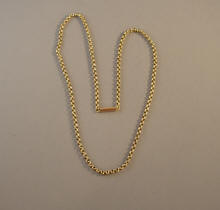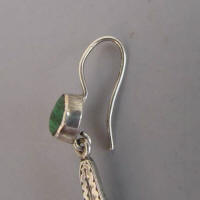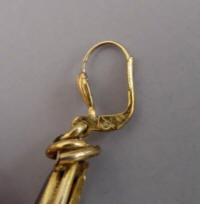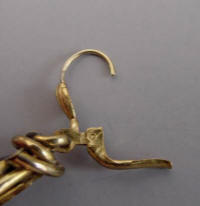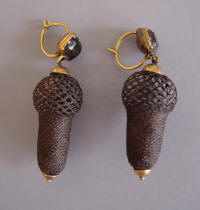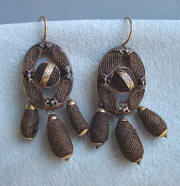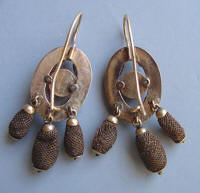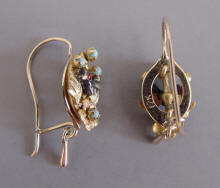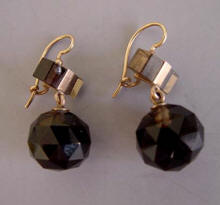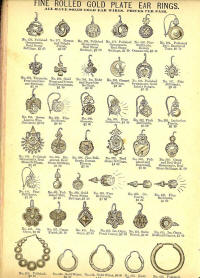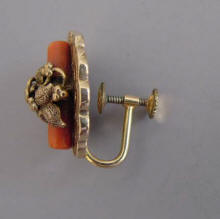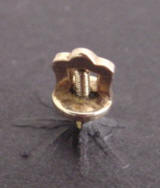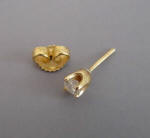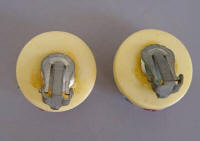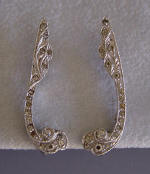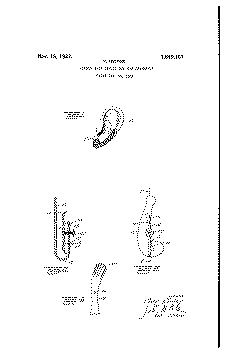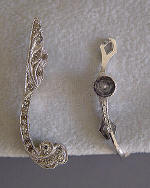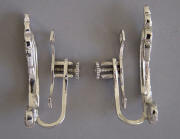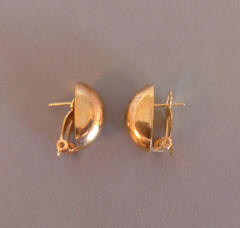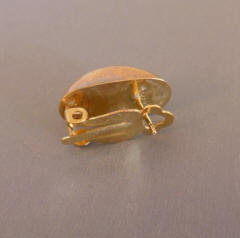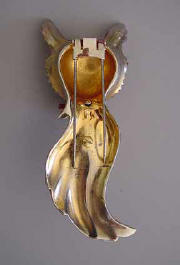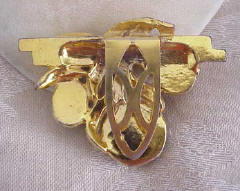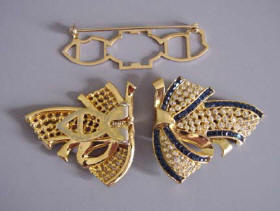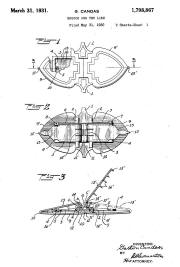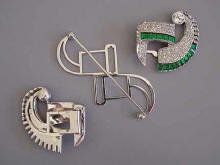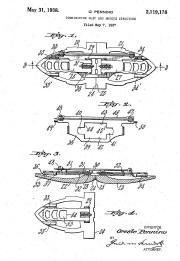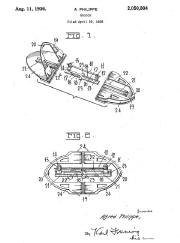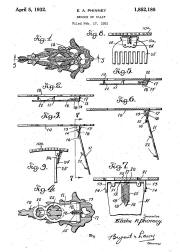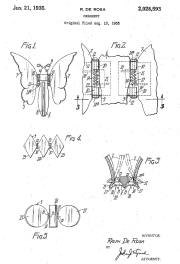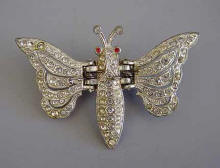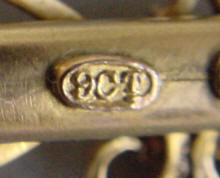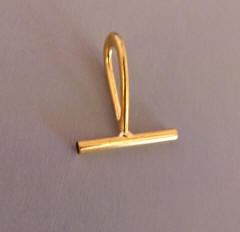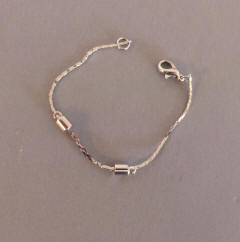Jewelry that we have available TO BUY can be accessed by clicking HERE
|
JEWEL CHAT |
|
|
|
| PIN BACKS |
|
|
|
|
"C" CATCH pin back fastener, |
"C" CATCH pin back fastener, 1800s. |
."C" CATCH pin back fastener, 1800s. |
|
|
|
|
Victorian brooch |
Victorian brooch with |
Victorian brooch with |
|
|
|
|
Victorian brooch with a |
TROMBONE catch patented circa |
RIVETED HINGE pin back began to be use circa 1900. |
|
|
|
|
|
ENAMELED |
|
RIVETED BACK brooch. |
|
|
|
|
|
F.E. FARNHAM , 1937 |
One piece pin mechanism with safety catch, similar to that shown in the |
E. Morehouse, 1945 |
|
|
|
|
Benj. Allen & Co. Exclusively Wholesale, |
Vintage jewelry findings of the 50s, including safety catches, pin stems and |
Vintage jewelry findings including keyless padlocks, sister hooks, |
|
|
|
|
|
Vintage 1950s jewelry findings including guard chains and ring guards. Dual ring |
Vintage 1950s jewelry findings including snap catches for neck |
|
| BRACELETS |
|
|
|
|
Tongue and groove catch, |
Tongue and groove catch |
Tongue and groove catch |
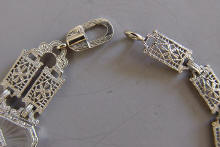 |
|
SPRING HOOK bracelet catch on a circa 1930s bracelet |
HASKELL blue and pink glass |
G.K. LOWE, 1935 |
| NECKLACES |
|
|
|
|
|
SPRING RING first |
JEWELER’S findings, split rings, spring rings, jump rings. |
VICTORIAN silver beaded |
|
|
|
BOLT RING first used |
SPRING RING first |
SPRING RING, starting in the early 1900s. |
|
Victorian PIN & BARREL catch. |
Patent 1,386.746 Wackenheimer Spring ring !921 |
HOOK AND BOX catch for a |
|
BARREL clasp |
S.F. Myers & Co. Annual Illustrated Wholesale Price List, |
|
| EARRING BACKS |
|
|
|
|
|
LOOP or EAR WIRES |
HINGED EAR WIRE |
VICTORIAN 14k yellow gold |
|
|
|
|
|
VICTORIAN hair |
BIRD Victorian 12k and turquoise bird-motif pierced earrings with |
Smoky quartz earrings showing the findings. |
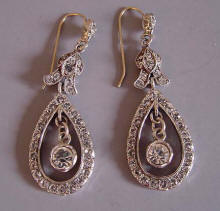 |
|
CLEAR paste dangle pierced earrings marked "sterling" silver, gold SHEPARD’S HOOK wires, 1-5/8". View View |
RODDIN 1888 Catalogue, earrings Roman and bright finish, polished ornaments, engraved tops, onyx, gold wires and engraved real stone settings. |
The SCREW BACK shown here was patented in |
|
|
|
|
|
Vintage jewelry findings of the 50s, including safety catches, pin stems and |
Vintage jewelry findings including keyless padlocks, sister hooks, clutches |
Vintage jewelry findings including snap catches for neck |
|
|
|
|
|
THREADED |
POST & CLUTCH circa |
The CLIP BACK mechanism for earrings was |
|
EARRINGS marked |
Safety back device for ear ornaments, 1927 |
|
|
|
|
M. JELLINEK, 1946 |
Screw back |
French earring clip In the 1940’s the switch was made to the "French clip", the |
|
|
Side |
| CLIP STYLES |
|
TWO-pronged FUR CLIP |
BACK of a DRESS CLIP circa 1930-40. |
COROCRAFT DUETTE bow brooch that converts to two dress clips. "Duette" is a Coro trademark, and describes two fur clips that can be worn separately or attached to a pin backing. |
|
|
|
CORO Duette large blue faux star |
G. CANDAS, 1930 |
CORO Duette clear rhinestones and |
|
Cartier patented a mechanism for double brooches in about 1927, and Coro
|
|
|
|
|
|
E. PENNINO, 1937 |
A. PHILIPPE (TRIFARI), 1936 |
E.A. PHINNEY, 1931 |
|
|
|
|
R. DeROSA, 1935 |
BUTTERFLY pin… |
|
| MISCELLANEOUS |
|
|
|
|
|
|
JEWELER’S findings, slides, spirals, swivels, hooks, settings. |
BRITISH 9 carat gold mark |
| CONTEMPORARY EXTENDERS |
|
|
|
|

